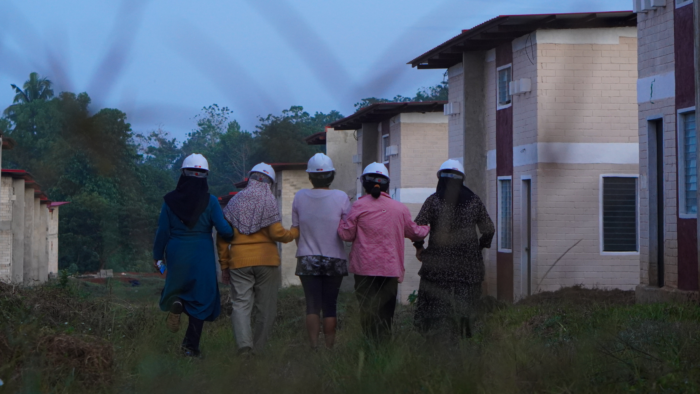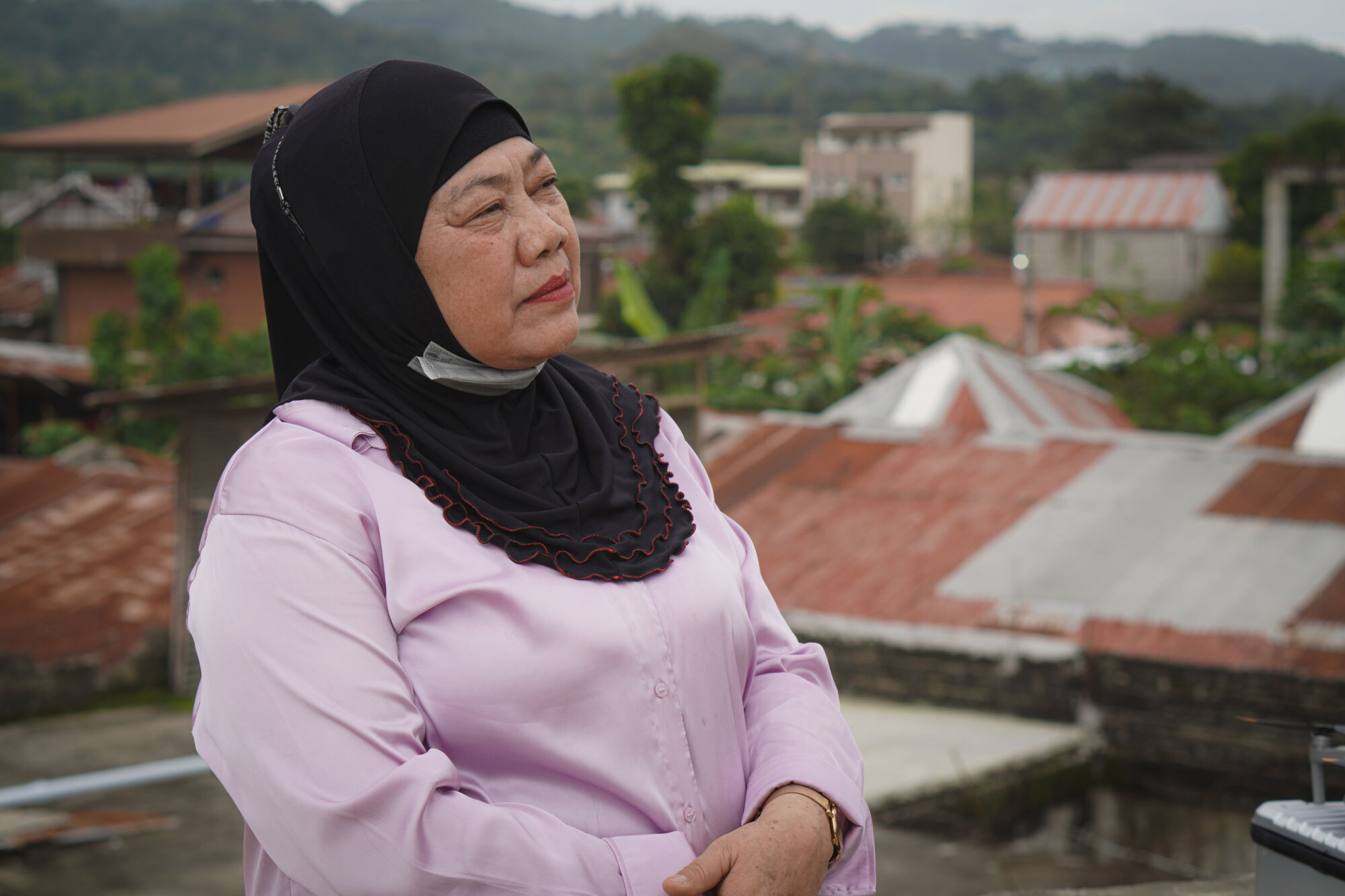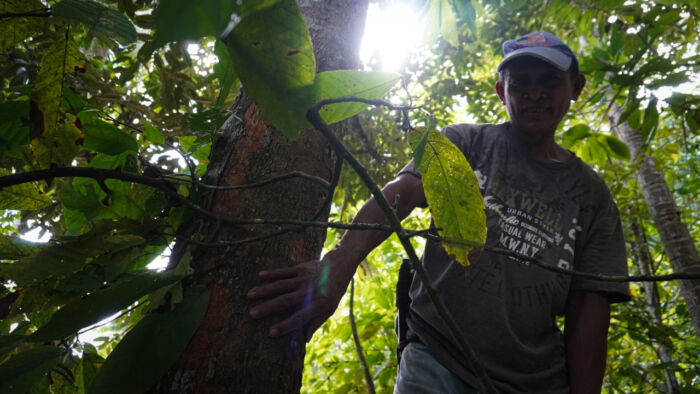Whenever it rains, Omairah’s heart beats faster as she looks for her children.
 Omairah Mardan Ampa Photo by Kisha Beringuela
Omairah Mardan Ampa Photo by Kisha Beringuela
Omairah is a 58 year old mother who was a survivor of one of the Philippine’s most catastrophic typhoons, Sendong – known internationally as Severe Tropical Storm, Washi. The typhoon killed 1,268 people, many of them women and children. Cagayan de Oro accounted for the majority of deaths, where Omairah resides up until today.
The 2011 typhoon left trauma to the survivors and residents of Cagayan de Oro. For Omairah, whenever she hears even a small drop of rain, she would get anxious, and worried on how to contact her children. Omairah with her family would always leave their homes unguarded in search of higher ground, hoping never to experience another calamity like typhoon Sendong.
She would call them up to go home immediately so that they can evacuate. Their homes for the night would be a transient room in a high-rise building, but more often than not, it would be a laid-out carton box in a parking lot of their city mall. This has been a staple arrangement with the mall’s administration. Luckily enough,the mall authorities understand the trauma that these families have been through because of typhoon Sendong

Photo by: Kisha Beringuela
Omairah currently leads her organization, Muslim-Christian Women Homeowners Association, a women led prgainzation for housing rights. As president of her organization, she has been lobbying and waiting for relevant local and national government offices to act on their relocation.It has been more than a decade of waiting for Omairah and only recently did real change started in their lives. Through reaching out to organizations like Circle Forge and We Effect, the dream to own safer homes are closer to their grasps.
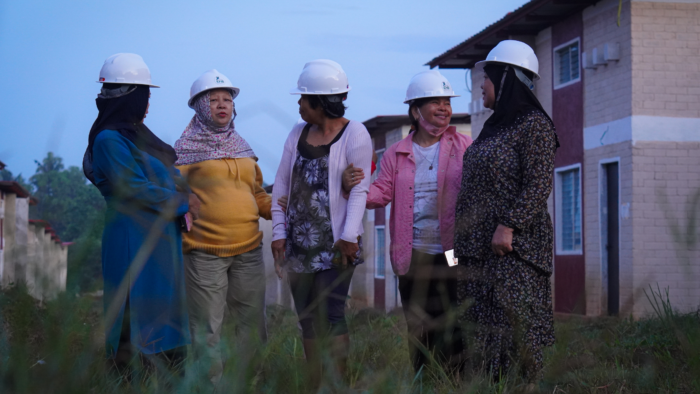
We Effect Philippines together with Circle Forge ensured that accessible, resilient, and low cost housing will be granted to them. Their current homes face flooding even with small amounts of rain as they are near the river. Their area also serves as a catch basin of all flood waters from the city since they are located in the lower part of the city.
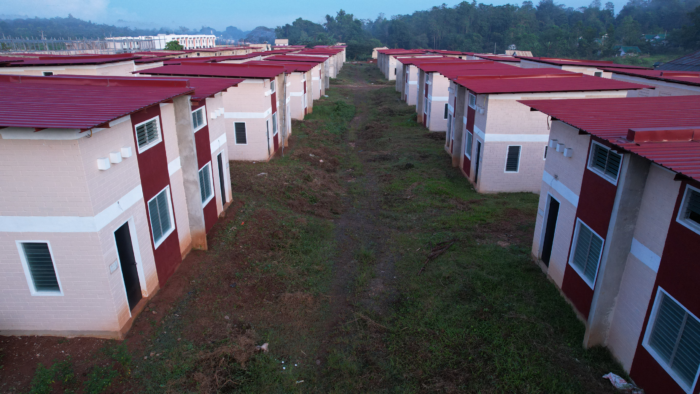
Photo by: Kisha Beringuela
As of January 2023, more than 100 houses has been constructed in Lumbia, Cagayan de Oro. These housing units will serve as new homes for Omairah and the other members of the Muslim Christan Women Homeowners Association. Their houses are built in Lumbia, Cagayan de Oro, which is in higher ground and away from the basin area in Balulan.
